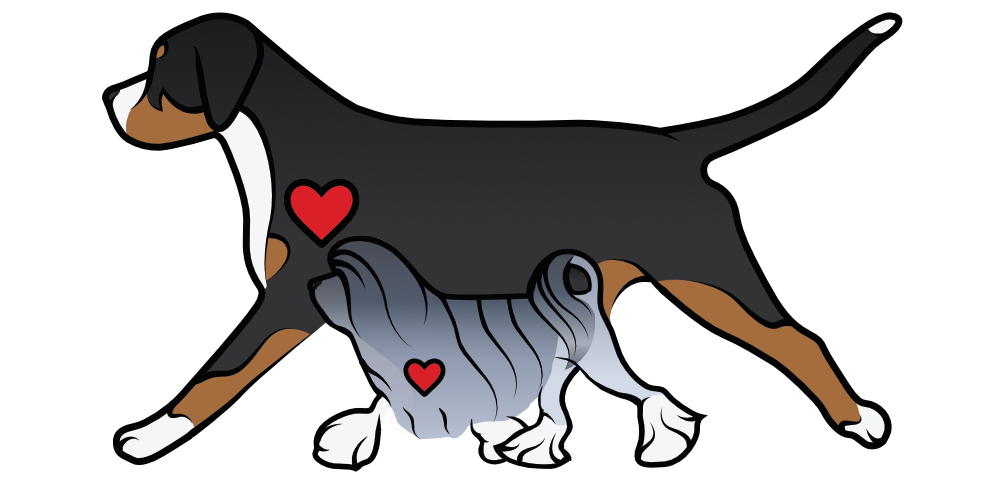[youtube https://www.youtube.com/watch?v=pc4Dqk6C2FA&w=640&h=480]
This video shows the harnessing and hitching section that is common in many draft tests.

Roman Reign Greater Swiss Mountain Dogs and Lowchens
Preservation Breeders of Sport, Service, and Companion Dogs
[youtube https://www.youtube.com/watch?v=pc4Dqk6C2FA&w=640&h=480]
This video shows the harnessing and hitching section that is common in many draft tests.
Lesson: Harnesses, Harnessing, and Hitching
Here’s a video on harnesses and harnessing. I may make other videos with more details, but here’s the basics to get you started.
Here’s a video on hitching your dog from a sit position. It works the same way from a stand position. Mouse just happened to be sitting.
Over the years, as a participant, judge, or steward, I’ve seen a variety of mistakes that have caused people to fail out of a draft test. The following are photos of what might be overlooked during harnessing. Now, I haven’t made all these mistakes, but I’ve made some. The others were stories from other judges. Sometimes when people get nervous, flustered, or frustrated, they tend to forget to check over the entire done before indicating to the judge that harnessing is complete. Always double check!
As a judge, here’s the list of items I check when performing the harness and hitch judging. Note: other judges may or may not check the same things I check.
* Check cart balance by lifting the shafts. In a loaded or unloaded cart, there should be only 1 lb of pressure (may be a little heavier depending on the weight of the shafts). Any weight that is heavier than the weight of the shafts indicates that the cart is unbalanced or improperly hitched.
* Check trace tightness. They should be tight and taut. If the traces are not fairly taut, it will cause multiple problems. This is very serious safety issue, and I would consider it to be an unsafe rig.
* Check fit of the neck piece on a siwash. I check out how snug it is, and I check that the prosternum is at the V. If you put your fingers right at the inside of the V, you should feel the prosternum bone. If you do not, the neck piece is either too big or too small. Too big or too small can pinch a dog’s neck.
*Check for tightness of the cinch (forward) and belly band. It should fit the dog perfectly. Not loose, nor too snug.
*Check that the shaft loops are tight and cannot go over the brakes.
Proudly powered by WordPress | Theme: Baskerville 2 by Anders Noren.